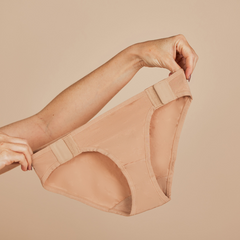
Recovering from a broken wrist can be a challenging and frustrating experience. Everyday tasks like dressing and eating can become more difficult and require adjustments and even assistance from those around you.
There are some great tips for broken wrist recovery and some adjustments you can make to make sure the healing process is as easy as possible.
Broken Wrist Recovery Tips
A broken wrist will not heal overnight but there are a few things you can do to help it along.
- Listen to your body and allow yourself enough rest to promote healing.
- Follow your healthcare provider's instructions and attend any recommended physical therapy sessions to regain strength and full mobility.
- Use assistive tools and adaptations to try and maintain as much independence as possible in your daily activities. This can prevent stiffness but you should be careful not to overwork your broken wrist.
- Stay positive and patient throughout the recovery process. It’s important to remember that healing takes time and rushing can do more harm than good.
- Engage in light exercises as recommended to promote circulation and prevent stiffness.
- Don't hesitate to reach out for support from loved ones. Their encouragement and assistance can make a huge difference to your recovery.

7 Tips For Living With A Broken Wrist
Here are some of our top tips for handling the transition as your broken wrist heals.
1. Buy A One-Handed Bra
Investing in a one handed bra is a crucial step towards regaining independence during your recovery. These specialized bras feature front-fastening closures, eliminating the need for intricate back clasps and two-handed fastens. They also mean you won’t need to rely on others to help you with this part of your daily routine.
Read: How to put on a bra with one hand.
2. Prepare A Dressing Station
Create a designated dressing station in your living space to simplify the process of getting dressed with one hand. Organise essential clothing items, including your one-handed bra, within easy reach. Consider investing in assistive tools such as dressing sticks or buttonhooks if you need them.
3. Adapt Your Eating Habits
Modifying your eating habits can make mealtimes more manageable. Choose foods that are easier to handle with one hand, and consider investing in adaptive kitchen tools such as one-handed cutting boards and utensils with larger handles.
We spoke to a friend who has recently suffered with a break who offered us a few top tips for this list. One of her top suggestions was swapping spaghetti for penne for easier mealtimes and to try using food clips rather than elastic bands.
4. Change Up Your Self-Care Routine
Another great recommendation from our trusted source that absolutely needs to be on this list is flip top containers!
Applying creams and lotions can pose a challenge when dealing with a broken wrist. One option is to choose lotions and creams that come in flip-top containers rather than twist-off or pump dispensers.
5. Keep Things Within Reach
To minimize the need for stretching or straining, keep essential items within easy reach. Whether it's clothing or daily necessities, organizing your environment so that everything is easily accessible will significantly simplify your day-to-day activities.
6. Take Advantage of Technology
Tech can be your best friend if you suffer an injury like a broken wrist or arm. One of our best broken wrist life hacks is to use voice features on your phone! You can use voice notes rather than typing out a message to stay connected to family and friends and you can even link it up to smart home devices to make managing smaller tasks that bit easier.
7. Ask For Help!
Remember, it's okay to ask for help. Reach out to family members or friends for support when you need it. Whether it's fastening jewellery, adjusting clothing, or completing other tasks that require two hands, asking for assistance will alleviate any unnecessary strain and ensure a smoother recovery process. Remember, you don't have to face it alone.



